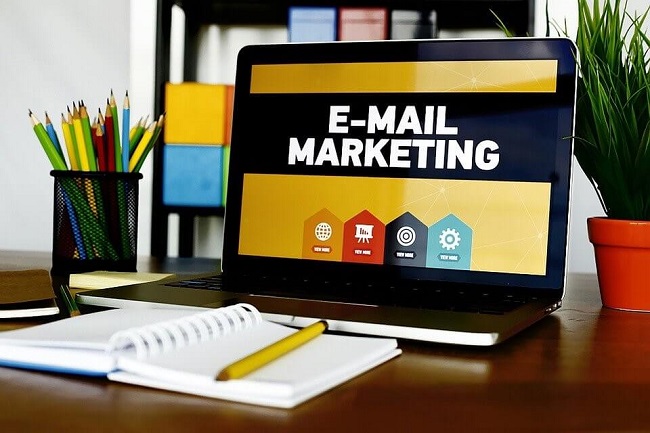Customer Acquisition Cost, known in marketing circles as CAC, describes how much it costs a company to acquire a new customer. The use of CAC has increased in popularity as organizations use web analytics to make data-driven decisions.
Whether they’re paying when potential customers click on banners or investing in articles and graphic content, measuring their CAC can help companies determine if they’re getting value for their money from their marketing efforts.
Internet marketing methods can target specific groups of customers at a granular level. This is relatively new. Traditionally, companies have to cast a wide advertising network to focus their marketing efforts on a wide range of potential customers. Hopefully, this will at least bring in some new customers.
Because this approach is less specific, it is common for companies to see little return on their marketing investment. However, modern, targeted campaigns combined with customer acquisition metrics can not only reach specific groups of people but also tell you how much to spend on a new prospect to bring them in and convert them into paying customers.
What Are the Benefits of Lower CAC?
By calculating your customer acquisition costs, you should be able to see the following benefits in your day-to-day operations on a practical level:
- More resources available/lower costs
- Organic leads are more relevant
- More time for sales and marketing teams to nurture leads
- Less personnel investment (because goals are easier to achieve) Streamlined processes that enable more precise targeting of new customers (better retention)
- Attractive customers and greater brand loyalty
It’s also worth remembering that if your new customers are happy, they can also play a role in improving new customer acquisition by leaving positive reviews and talking about your brand. The obvious advantage is that it won’t hurt your budget.
Why Email Marketing Is Powerful When It Comes to Decreasing Your CAC
For eCommerce, the customer acquisition cost may be the most important metric. If you’re not sure how to calculate your ecommerce customer acquisition cost, simply take the amount you spent on customer acquisition (through all channels such as paid, email, and social) and divide it by the amount of new customers attained during that time.
The goal of getting a CAC is to ensure that the money spent on digital customer acquisition is paid for and profitable. The easiest way to reduce and optimize your CAC is to activate your contacts to make purchases. This is where email marketing steps in to change things, and with ios15 being a blessing for email marketing, it’s the recipe for success.
Email subscribers are more likely to buy from you if they know, love, and trust your brand. This makes active subscribers the lowest hanging fruit for generating revenue. If you’ve built a strong email program that keeps your subscribers coming back for more, they’re more likely to bite you if you make them an offer they can’t resist.
Incentivize your subscribers by giving them more special product offers so they keep opening your email, engaging with your content, and buying your products. But don’t stop there. Experiment with one-to-one and one-to-many emails and customize them based on interests and content characteristics.
For example, let’s say you sell makeup online. You’ve been talking about the benefits of a new concealer for the past few weeks. In your emails, you link to a variety of free content that educates your contacts about the benefits of this product as well as the color options available. You can also add an exclusive offer to your messages to sweeten the deal.
3 Different Ways to Reduce CAC With Email Marketing
If you’re looking to increase your store’s conversion rate, you can try to improve your copy, take better photos, display customer reviews, and improve your website user experience.
These are all effective ways to move conversations forward. However, in addition to on-site optimization and experimentation, another way is to increase conversions through your marketing channels.
Keep in mind that every brand is different, and while trends are operating across many verticals, you should always try anything that has the potential to become a highlight of your business.
1. Implement and test your front-end offering
Most visitors won’t buy on their first visit, so you need to get their contact information to maximize your chances of making a sale. You need at least one popup that collects emails in exchange for a certain amount. Depending on the quality of your traffic, you should expect a rate of anywhere from 2-20% to cold traffic.
The winning bid is the cause of most opt-ins, the first buyer wins and offers the smallest margin. You may find that one offer brings many opt-ins but little profit per sale. In that case, you need to decide which metric you need to optimize.
2. Sell campaigns to drive long-tail conversations
Unless you’re selling $2,000 office chairs, many of your customers will see and buy your ad on their first visit. However, there are always customers who take a long time to make their first purchase. These are your longtail conversations.
You can increase your longtail conversations with remarketing through ads and social media, and you can do the same with email campaigns. Most brands email their list regularly. If you don’t send regular campaigns, you should start yesterday.
If you are already sending regular campaigns, they are looking for a higher frequency, let the source of course. Going from 5 campaigns to 10 campaigns per month won’t double your conversion rate, but it will likely encourage incremental growth that will increase your front-end conversions and change your cost of acquisition.
3. Create a welcome sequence based on the observations
A welcome sequence is a series of automated emails that a subscriber receives when, for example, they pre-select your offer. 10% on first purchase.
“Best Practice” recommends 3-5 emails that welcome subscribers to your brand, show testimonials, and show how your products solve your customers’ problems. It’s better than nothing, but it’s not the best approach.
If you send a regular rhythm of campaigns and send at least 10-20, you will probably feel all your numbers on the standard. But to get a better explanation of these numbers, you need to start by splitting your campaigns into 2 duplicate campaigns; one is sent to your customer list and the other is sent to your future list.
Both campaigns are the same, but the campaign reports will be separate. The benefit it gives you is to see an increase in clicks and sales on your part of the lead list above the benchmark.
Lowering Customer Cost Acquisition Is About Using Resources More Effectively
At the end of the day, reducing business expenses and costs is in your best interest. One of the simplest, and most effective, ways of doing so is to rethink your email marketing strategy and consider ways to achieve a low customer acquisition cost. These simple tips are a great way to get started, and we hope that it helps you reduce your CAC.





Tell us your thoughts in the comments